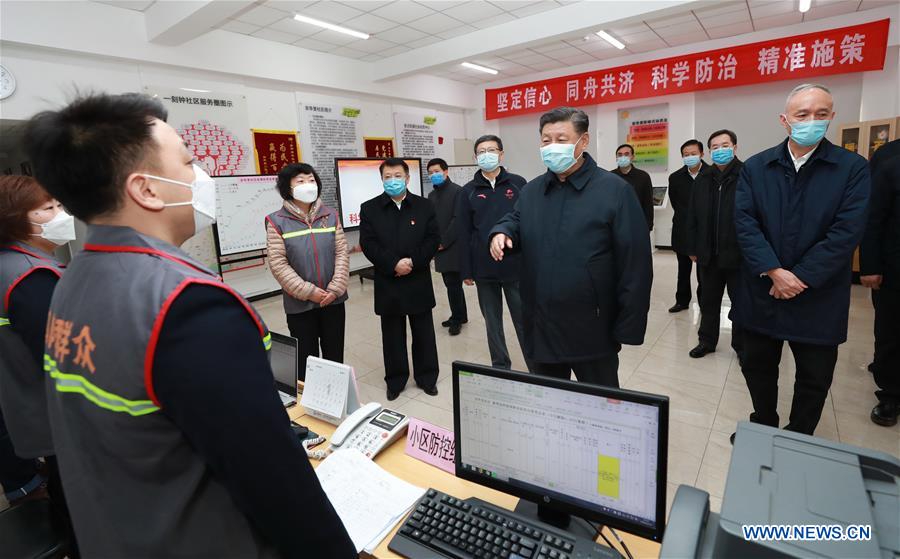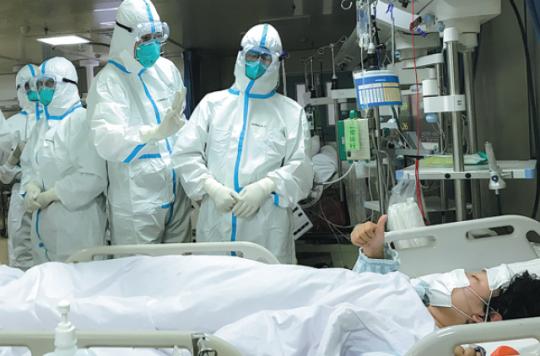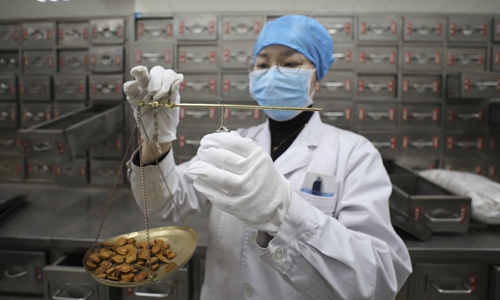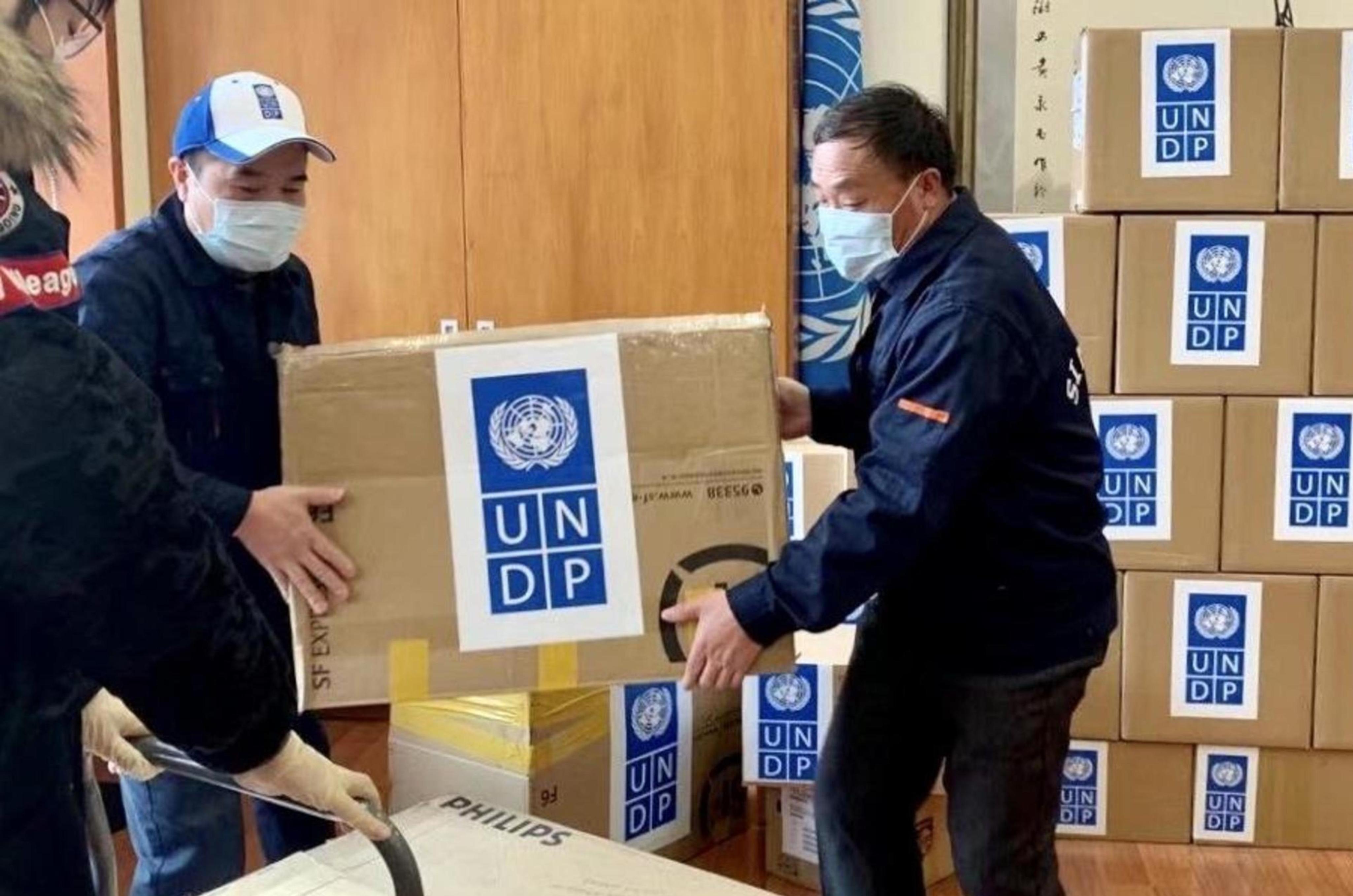As the fight against the novel coronavirus epidemic has come to a critical point, Shanghai Institutes for International Studies (SIIS), a Chinese think tank recently released a report detailing China’s fight against the outbreak.
The report said in the beginning that the COVID-19 epidemic has shown a trend of localized clusters of outbreak (especially in Wuhan and other cities of Hubei province) but has come increasingly in check on a national level. 
Chinese President Xi Jinping inspects the novel coronavirus pneumonia prevention and control work in Beijing, capital of China, on Feb. 10, 2020. Xi visited Anhuali Community, Chaoyang District of Beijing to learn about the epidemic prevention and control at the primary level and the supply of daily necessities.(Photo: Xinhua)
As stated in the report, the Chinese government carried out strong measures in response to the outbreak. For example, sending medical personnel and resources to Wuhan at the start, calling for the practice of self-quarantine among residents and providing financial support for enterprises affected by the outbreak.
Data collected by the report also indicates that China’s work on epidemic prevention and control has delivered positive results. The growth rates of confirmed infections, suspected cases and patients under medical observation are all in steady decline. The number of cured patients continues to rise – from 34 by January 23 to 5,911 by February 12 nationwide.

A novel coronavirus patient gives a thumbs-up to doctors at a hospital in Wuhan, Hubei province, on Monday. (Photo: Xinhua)
Although a date for the turning point of the epidemic hasn’t been agreed on among health experts, the report pointed out that a concerted effort of both the Chinese people and the Chinese government determines when it will be.
With a deeper understanding of the virus, China has adjusted its epidemic prevention and control strategies at different stages. The National Health Commission has released separate guidelines for the prevention and control of the epidemic and treatment of infected patients, both of which are updated according to the latest developments.
Effective quarantine is crucial to contain an epidemic; and the improvement of detection diagnosis rates is key to patient identification. By the publication of the report, 40 testing institutions in Wuhan have been authorized to conduct testing of up to 10,000 persons per day.
To find the most effective treatment and drugs, 36 clinical trials related to the novel coronavirus have been registered at the Chinese Clinical Trial Registry as of February 6, covering a wide range of research domains, including Western medicine clinical research, traditional Chinese medicine (TCM) treatment, traditional Chinese-Western hybrid treatment, psychotherapy, and post-recovery rehabilitation.

A pharmacist weighs Chinese herbal medicines for patients infected with the novel coronavirus at Anhui Provincial Hospital of Traditional Chinese Medicine in Hefei, east China's Anhui Province, Feb. 18, 2020. (Photo: Xinhua)
In addition, various free hotlines have been set up to provide counseling services for those in distress or mental disorder due to the outbreak.
In terms of the treatment of COVID-19 patients, the Chinese government adopted a three-level quarantine model to improve medical resource allocation. The two makeshift hospitals, Leishenshan Hospital and Huoshenshan Hospital, have added more than 8,000 beds along with other remodeled institutions to admit COVID-19 patients. There are three Fang Cang hospitals in Wuhan to receive patients with mild symptoms. Hotels near hospitals have been temporarily turned into places for quarantine for potential virus carriers.

Medical staff test facilities and make the bed at Huoshenshan (Fire God Mountain) Hospital to make final preparations to admit patients infected with the novel coronavirus in Wuhan, central China's Hubei Province, Feb. 3, 2020. (Photo: Xinhua)
Noticeably, internet companies like Tencent, Baidu and Alibaba play an important role in the fight against the epidemic. Through 5G, big data analysis and AI algorithm, these companies help provide online medical consultation services, monitor passengers’ temperatures in public places and accelerate the process of confirming suspected cases.
At the end of the report, it gives credit to international cooperation in the battle against the epidemic. More than 30 countries have donated medical supplies to China so far. The World Health Organization has been working with China to monitor the epidemic and coordinate a concerted international response.

Staff members transfer medical supplies provided by the United Nations Development Program (UNDP) to help China combat the novel coronavirus in Beijing, capital of China, Feb. 12, 2020. (Photo: Xinhua)
The report is a project directed by Chen Dongxiao, president of SIIS, and is available for download on the institute’s website.
(Compiled by Li Bowen)


